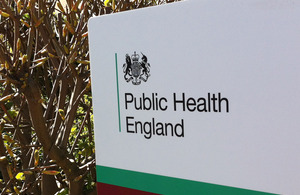Dancing in Time
Dance programme to improve the health and wellbeing of community-dwelling older adults.

Summary
An 8 week contemporary dance programme with a specific focus on modifying physical factors (physical activity status, mobility, sedentary behaviour patterns) and psychosocial factors (depressive state, fear of falling) that can contribute to falls.
Background
Being an active older adult is very important. Reducing the time spent sitting, and increasing the amount of time being active can
- extend the number of years a person can live independently
- reduce disability
- offer benefits to many bodily systems, such as the functioning of the heart and brain
- improve overall quality of life
Over the past few years, dance has been shown to be an enjoyable recreational activity used to improve the health and wellbeing of older adults through being physically active. Research has shown that dance improves balance, agility and muscle strength. It is suggested it could also improve mood and reduce the risk of depression in older adults. This is also important as all of these are considered important modifiable factors for reducing falls, a common cause of serious injuries in community-dwelling older adults.
What was involved
In January 2015, Leeds Public Health commissioned Yorkshire dance and the University of Leeds to investigate the feasibility and acceptability of implementing a dance programme to improve the health and wellbeing of community-dwelling older adults in Leeds, with a specific focus on modifying factors which we know can contribute to falls.
The dance programme comprised 10 weeks of contemporary dance, delivered twice a week for 90 minutes at a time. The dance sessions were led by specially trained choreographers from Yorkshire Dance.
Contemporary dance is a low-impact physical activity that is therefore open to all regardless of their physical condition. It offers the opportunity to improvise or interpret the music at a more person-centred level, either individually or as part of a larger group through movement, which includes elements of aerobic exercise, balance activities, low-level resistance exercise, and moves to enhance flexibility.
Participants for the dance programme were recruited from 3 neighbourhood networks in the City of Leeds. Researchers from the School of Biomedical Sciences (Sport and Exercise Sciences) based at the University of Leeds used a variety of questionnaires and motor activities to examine the impact the dance programme had on physical activity patterns, balance, fear of falling and mood.
All participants were invited to take part in a group discussion in which they were asked about their experience of the dance programme, how they felt it had affected them and their bodies, and what they thought might prevent or encourage others to take part in dance in the future.
A total of 38 people (aged 60 to 85) completed the dance programme, and all but one was female. On average they attended over 70% of offered sessions. Of these 38, 22 agreed to the research element of the dance programme, and these people attended on average 85% of all the 22 sessions offered.
What works well
The data from the questionnaires and motor tasks showed that taking part in the dance programme decreased the amount of time spent sitting in the week, and also increased the amount of time participants were engaging in either moderate or hard physical activity.
Participants also performed better on activities which were designed to test their mobility and balance; and were more confident in their ability to undertake tasks without feeling like they might fall. In addition, people who had taken part in the programme felt happier at the end of the 10 weeks than they did at the beginning.
The information from the group discussions showed that people viewed the dance positively and thought dance was a new way of being active. In addition, the group nature of the dance encouraged participants to attend and participants felt it was more enjoyable than exercising on their own. Several people noted health benefits that they attributed to the dance including reduction in pain, easing of stiffness in joints, increased energy levels, and better balance and coordination.
Other participants commented on how they felt they had used their brain, and had felt more relaxed and happy because of attendance at the dance sessions.
Overall, cost and location were important factors to consider when running future dance sessions, with people citing local buildings in their community as preferred venues, and low participation costs. Furthermore, it was considered important to slowly increase the amount of time given over to creative elements of the programme, but this was an important and unique element to the programme overall.
Next steps
Finally, we can anecdotally report that this type of programme has the potential to continue running more long-term. 2 groups of participants continue to meet and dance as a group, some 6 to 12 months after their original programme ended.
Further information
Contact at Leeds City Council: sharon.hughes@leeds.gov.uk